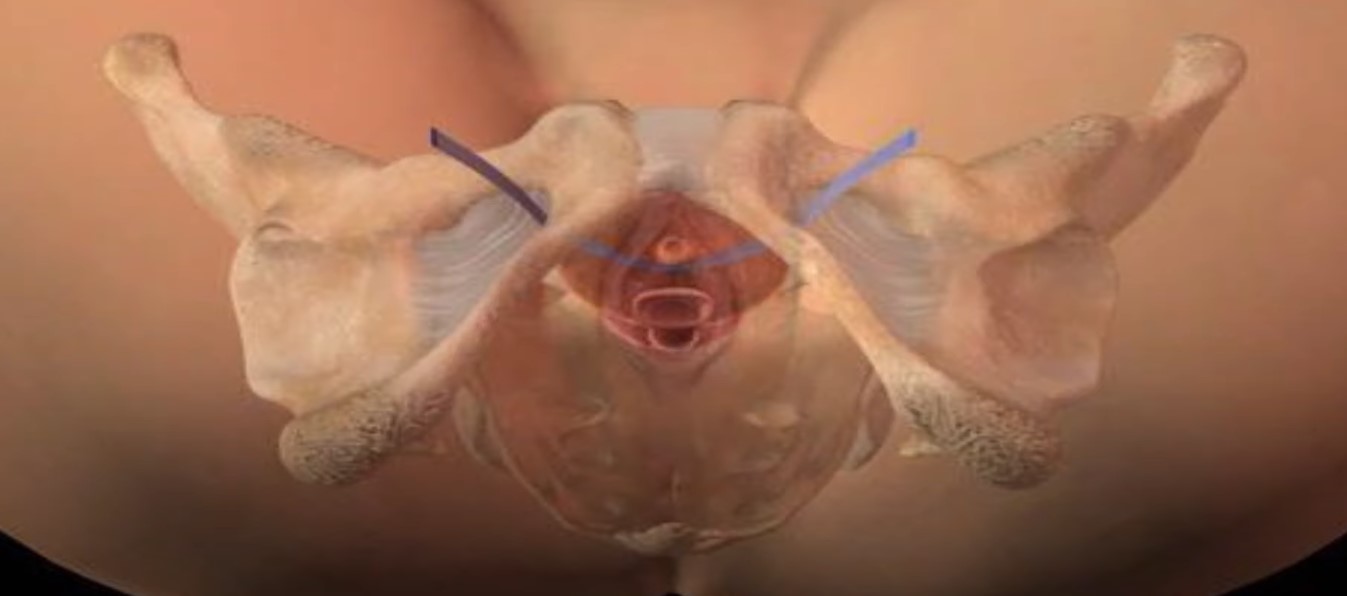Suburethral mesh or slings
The sling is made of biocompatible material and is used to provide additional support to the pelvic floor when it is weakened.


What are suburethral slings?
Surgical mesh or sling is a medical product used to provide additional support to the pelvic floor when it is weakened. Most surgical meshes are made of highly porous synthetic material - usually polypropylene - or sometimes of the patient's own tissue (such as, for example, the fascia lata, a tensor muscle located in the upper and lateral thigh), both types of material are very well tolerated by the body.
Sling is the standard surgical treatment for stress urinary incontinence, which causes urine leakage when the patient coughs, sneezes, laughs, lifts weights or performs physical exercise. In the case of female incontinence, a history of uterine surgery and childbirth - especially if it has been prolonged or with instrumentation - are risk factors. Incontinence in men may appear after prostate surgery, generally in the treatment of prostate cancer.
The first step in the treatment of urinary incontinence is usually pelvic floor rehabilitation with the help of a rehabilitator or physiotherapist. However, when this is insufficient, surgery with slings or mesh is considered. In cases where leakage is very abundant, or when other surgeries have failed, it is necessary to place adjustable meshes or even an artificial urinary sphincter.
In the case of women, the mesh or sling is placed under the urethra through a small incision inside the vagina. It is a simple and very minimally invasive procedure that lasts approximately 25 minutes. It is usually performed under short-term anesthesia and can sometimes be performed without hospitalization.
After surgery, patients remain with a catheter for a few hours and it is recommended to avoid heavy exertion during the first month after surgery to ensure adequate healing. Incontinence disappears as soon as the mesh is in place.
In the case of the male, the incision to place the mesh is usually made in the skin, below the testicles. It is also possible to place adjustable devices to regulate the pressure on the urethra. Once the surgical procedure is completed, the patient is admitted to the hospital for 24 hours.
- Low-aggressive surgery
- Surgery performed on an outpatient basis or with short-term admission
- Rapid mobilization
- Low complication rate
- Satisfactory results in 90% of cases
- High patient satisfaction rates
- Results maintained over time
- Need to avoid physical exertion during the first weeks after surgery.
- Complete study prior to surgery that may limit surgical treatment to be indicated in all patients.
- In women it is recommended not to become pregnant after surgery.
- Need to learn how to use the device in case of artificial urinary sphincter.
The management of male and female urinary incontinence is treated by professionals in our unit with years of experience in the field.
We carry out a detailed study of our patients and the treatment is proposed, offering the device that we consider most appropriate. The professionals of our service receive complex patients assessed in other centers for surgical management. In addition, we work together with pelvic floor physiotherapists to optimize results and perform the first step of the treatment.
Our experience is also reflected in the collaboration in registries of the European Association of Urology (EAU), assessing the results of surgery, appearing as the professionals with the highest surgical activity in this regard in our country. In addition, the registry in international databases allows us to audit the results and compare them with other centers of excellence.
We are the professionals with the highest surgical activity in Spain.
We work together with pelvic floor physiotherapists to optimize results and perform the first step of the treatment.
Newsof ROC Clinic in suburethral meshes or slings
Research
Da Vinci and Hugo RAS Platforms for robot-assisted partial nephrectomy: a preliminary prospective comparative analysis of the outcomes.
They ask us in the Consultation
See more questionsTeam of the suburethral mesh or slings unit


 +34 912 627 104
+34 912 627 104 Contact
Contact











